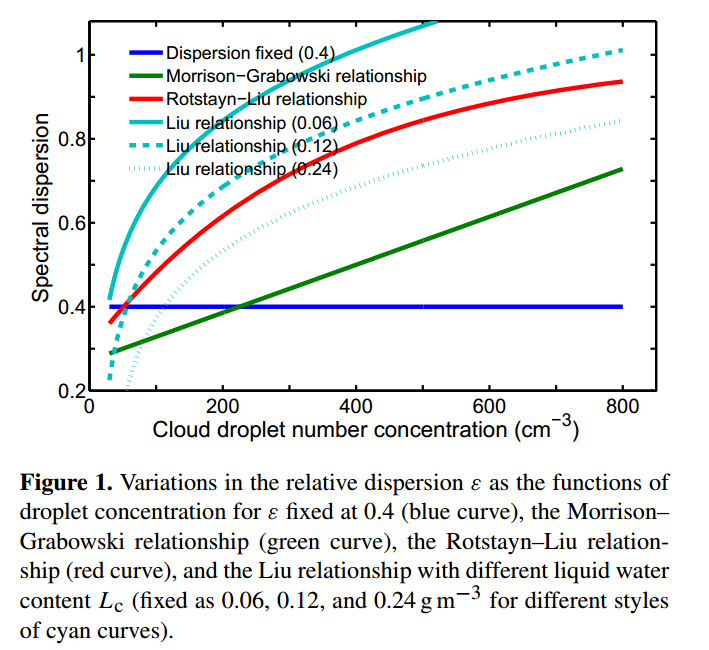最新科研进展
Sensitivity study of cloud parameterizations with relative dispersion in CAM5.1: impacts on aerosol indirect effects
Authors:
Xiaoning Xie1 He Zhang2 Xiaodong Liu1,3 Yiran Peng4 and Yangang Liu5
1 SKLLQG, Institute of Earth Environment, Chinese Academy of Sciences, Xi’an 710061, China
2 International Center for Climate and Environment Sciences, Institute of Atmospheric Physics, Chinese Academy of Sciences, Beijing 100029, China
3 University of Chinese Academy of Sciences, Beijing 100049, China
4 Ministry of Education Key Laboratory for Earth System Modeling, Center for Earth System Science, and Joint Center forGlobal Change Studies (JCGCS), Tsinghua University, Beijing 100084, China
5 Environmental and Climate Sciences Department, Brookhaven National Laboratory, Upton, NY 11973-5000, USA
Abstract:
Aerosol-induced increase of relative dispersion of cloud droplet size distribution ε exerts a warming effect and partly offsets the cooling of aerosol indirect radiative forcing (AIF) associated with increased droplet concentration by increasing the cloud droplet effective radius (Re) and enhancing the cloud-to-rain autoconversion rate (Au) (labeled as the dispersion effect), which can help reconcile global climate models (GCMs) with the satellite observations. However, the total dispersion effects on both Re and Au are not fully considered in most GCMs, especially in different versions of the Community Atmospheric Model (CAM). In order to accurately evaluate the dispersion effect on AIF, the new complete cloud parameterizations of Re and Au explicitly accounting for ε are implemented into the CAM version 5.1 (CAM5.1), and a suite of sensitivity experiments is conducted with different representations of ε reported in the literature. It is shown that the shortwave cloud radiative forcing is much better simulated with the new cloud parameterizations as compared to the standard scheme in CAM5.1, whereas the influences on longwave cloud radiative forcing and surface precipitation are minimal. Additionally, consideration of the dispersion effect can significantly reduce the changes induced by anthropogenic aerosols in the cloud-top effective radius and the liquid water path, especially in the Northern Hemisphere. The corresponding AIF with the dispersion effect considered can also be reduced substantially by a range of 0.10 to 0.21 W m?2 at the global scale and by a much bigger margin of 0.25 to 0.39 W m?2 for the Northern Hemisphere in comparison with that of fixed relative dispersion, mainly dependent on the change of relative dispersion and droplet concentrations ( ε/
ε/ Nc ).
Nc ).

Citation:
Xie, X., H. Zhang, X. Liu, Y. Peng, and Y. Liu, 2017: Sensitivity study of cloud parameterizations with relative dispersion in CAM5.1: impacts on aerosol indirect effects. Atmos. Chem. Phys., 17, 5877-5892. doi:10.5194/acp-17-5877-2017.

